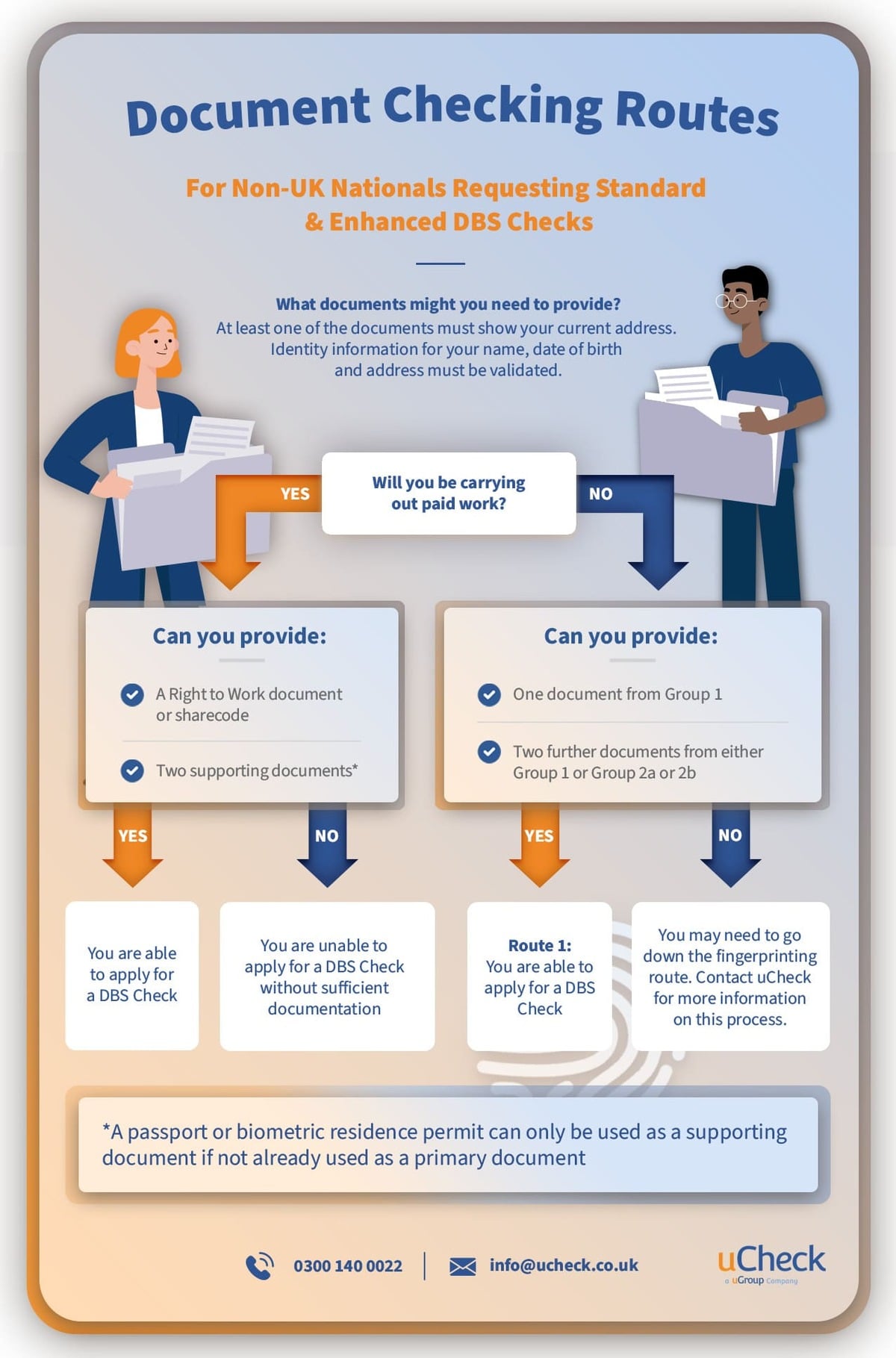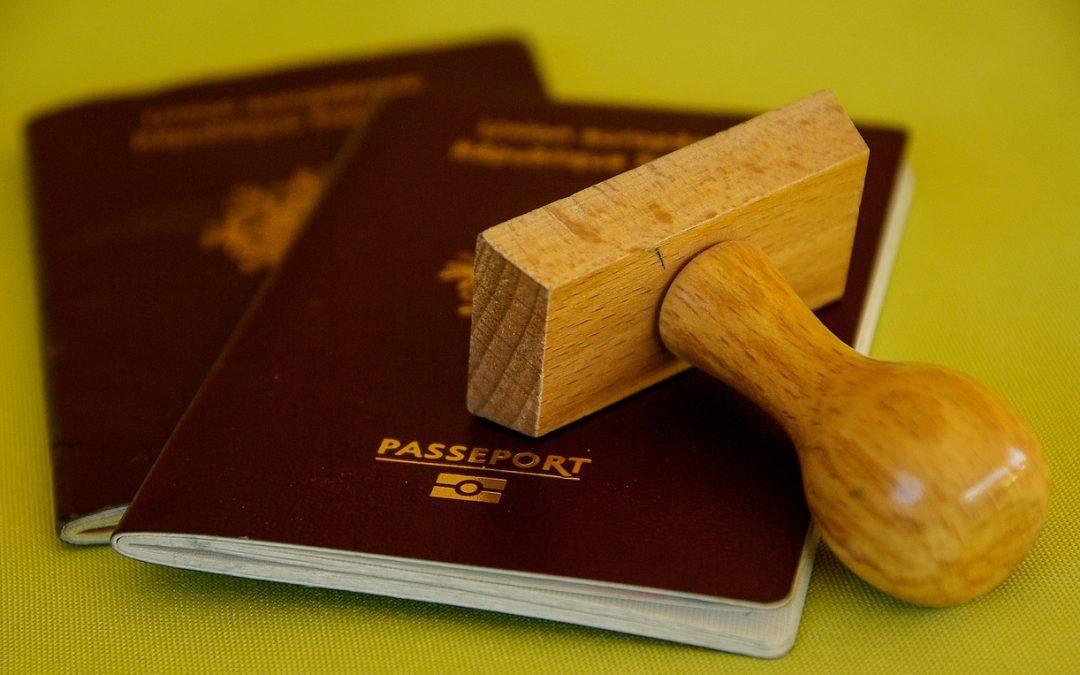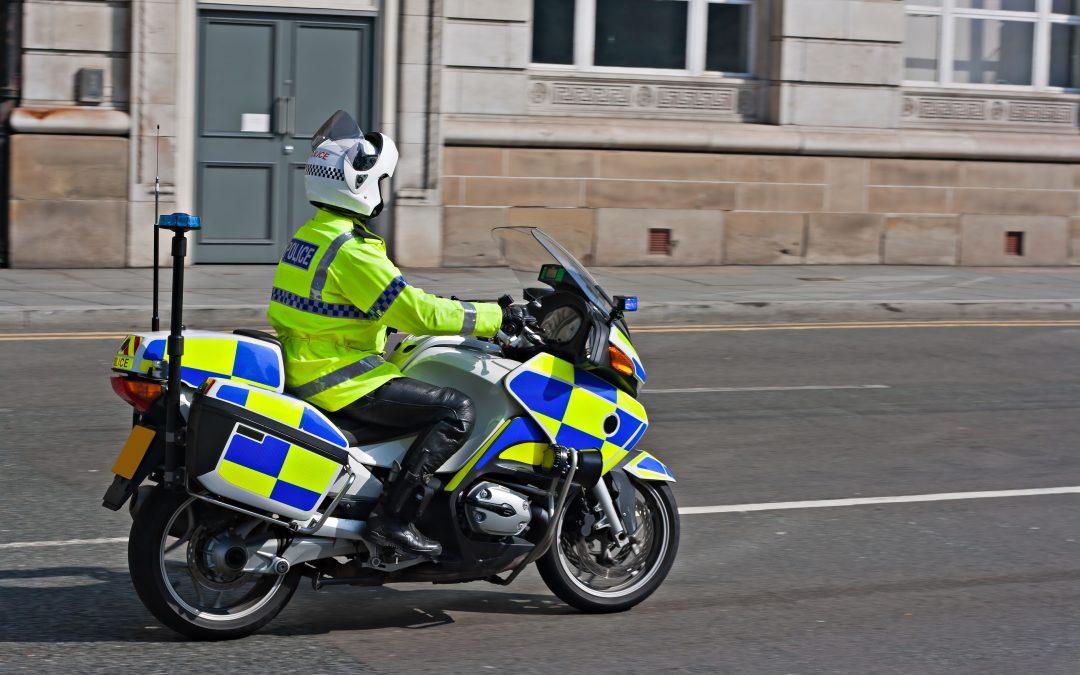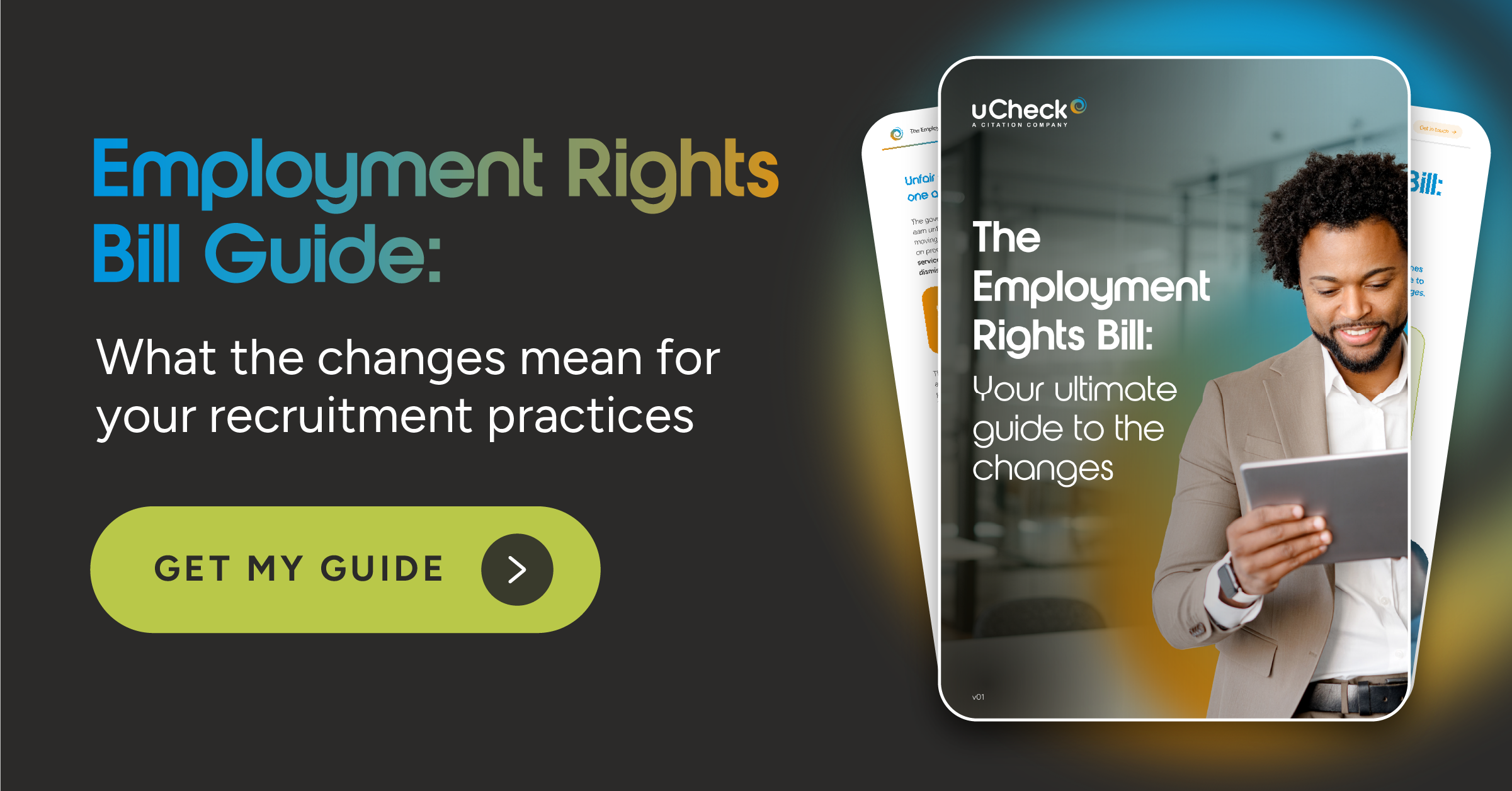If you’re thinking of applying for a DBS Check, you might be wondering what documents or forms of ID you might need to show during the application. In this blog we explain all.
When applying for a DBS Check you will need to provide at least 3 types of ID. This is to confirm the person’s identity correctly. The documents that are needed will depend on which route the applicant is able to take.
The applicant must try and provide documents from Route 1 first. If the applicant is not able to do so, they must continue through the routes until they can do so.
Route 1
The applicant must be able to provide:
- 1 document from Group 1
- 2 additional documents from either Group 1, or Group 2a or 2b
At least one document MUST confirm the applicant’s current address.
Route 2
If the applicant cannot provide any of the documents in Group 1, then they must be able to show:
- 1 document from Group 2a
- 2 further documents from either Group 2a or 2b
At least one of the documents must show the applicant’s current address. The employer conducting the applicant’s ID check must request an external ID validation check on behalf of the applicant.
The uCheck team utilises from a third party organisation to process the ID validation checks for a small fee of £6 Inc. VAT. The checks are returned within 48 hours.
Route 3
Route 3 can only be used if it’s impossible to process the application through Routes 1 or 2.
For Route 3, the applicant must be able to provide:
- A birth certificate issued after the time of birth (UK and Channel Islands)
- 1 document from Group 2a
- 3 further documents from Group 2a or 2b
At least one of the documents must again show the applicant’s current address.
If the applicant can’t provide these documents they may need to be fingerprinted.
Route 4
If Route 1, 2 or 3 cannot be completed due to insufficient ID documentation supplied, the only option left for the applicant is to complete a paper application form and have their fingerprints taken at a local police station.
On the paper form, the employer must select NO to W56 (‘have you established the true identity of the applicant’) as this shows they haven’t been able to provide the documents needed and will indicate that the applicant will need to be contacted to attend a fingerprinting session in order to establish the true identity.
Below are some examples of what ID is acceptable:
Group 1 – Primary Identity Documents
– Passport
– Biometric Residence Permit
– Current Photo Driving Licence, Full or Provisional
– Birth Certificate, issued at time of birth
– Adoption Certificate
Group 2a – Trusted Government Documents
– Current Photo Driving Licence , Full or Provisional
– Current Driving Licence , Paper version
– Birth Certificate, issued after time of birth
– Marriage/civil partnership certificate
– HM Forces ID card
– Fire Arms Licence
Group 2b – Financial and Social History Documents
– Mortgage Statement
– Bank/Building Society Statement – including opening confirmation letter
– Credit Card Statement
– Financial Statement e.g. pension, endowment or benefit
– P45/P60 Statement
– Council Tax Statement
– Work Permit or Visa
– Letter of sponsorship from future employment provider
– Utility Bill
– Entitlement document from government
– EU National ID card
– Cards with the PASS accreditation logo
– Letter from Head Teacher/Principle
Can I check my own identity?
No, unfortunately you cannot Identity Check yourself nor members of the family.
If you, yourself, need a check also, someone else will need to verify your Identity documents and send an email to us here at uCheck to info@ucheck.co.uk stating that they have seen your Identity documents, that they are all valid and understand it will now be their name being put against the application.
DBS Check Documents: Summary
We hope you found this blog about “What documents are needed and the different route options for DBS checks” informative.
If you’re uncertain about anything we’ve mentioned in this blog, you can speak to one of our team here at uCheck for further clarification on 0300 140 0022.









